When working with matplotlib, a common pattern for me is to figure in a function, return it, and let the caller decide what t do with it (render to screen, save to file etc...).
In jupyter notebook, I want to call such a function in a loop, and make sure that figure output is in order. In this answer https://stackoverflow.com/a/53450873/4050510 , we learn that plt.show() can help us with randering images. A rewrite of that answer is:
# cell 1
%matplotlib inline
import matplotlib.pyplot as plt
def make_figure(i):
f = plt.figure(i)
plt.plot([1,i,3])
return f
#cell 2
for i in range(3):
f = make_figure(i)
print(i)
plt.show()
The code above indeed works. The problem is that the solution breaks down if I want to create all the figures first, and then render them in chosen order. plt.show() will render all open figures at the same time.
#cell 3
fs = [(i,make_figure(i)) for i in range(3)]
for i,f in fs:
print(i)
plt.show()
The natural modification to make is to change the plt.show() into f.show(). Outside of jupyter notebook, that would solve the problem well.
# cell 4
fs = [(i,make_figure(i)) for i in range(3)]
for i,f in fs:
print(i)
f.show()
This does not work, raising UserWarning: Matplotlib is currently using module://ipykernel.pylab.backend_inline, which is a non-GUI backend, so cannot show the figure.
What is the explanation for this difference in behavior? How can I render matplotlib figures in chosen order, given a set of figure handles?
